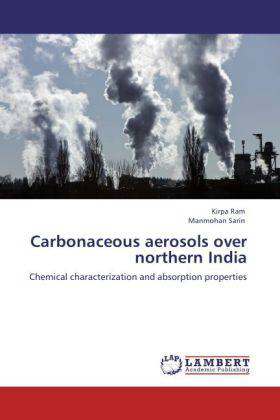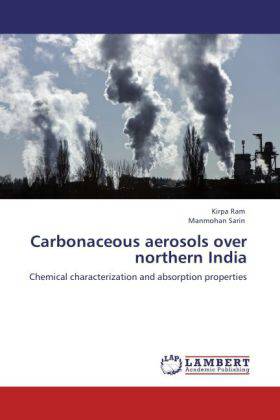
- Afhalen na 1 uur in een winkel met voorraad
- Gratis thuislevering in België vanaf € 30
- Ruim aanbod met 7 miljoen producten
- Afhalen na 1 uur in een winkel met voorraad
- Gratis thuislevering in België vanaf € 30
- Ruim aanbod met 7 miljoen producten
Zoeken
Carbonaceous aerosols over northern India
Chemical characterization and absorption properties
Kirpa Ram, Manmohan Sarin
Paperback | Engels
€ 76,45
+ 152 punten
Omschrijving
Carbonaceous aerosols, an ubiquitous component of Earth s atmosphere, contribute ~20-70% of total aerosol mass over urban regions and affect radiation budget, hydrological cycle and climate on a regional to global scale both via direct and indirect effects. The formation of secondary aerosols, in conjunction with the airborne particles of primary origin, has been recently recognized as a dominant process contributing to air pollution over urban areas. In addition, secondary aerosols are more hygroscopic and play an important role in the modification of the cloud activation processes by acting as cloud-condensation nuclei (CCN). Therefore, understanding chemical characteristics of primary emission sources and secondary aerosol formation is critical to evaluate their role in the modification in absorption properties and CCN activities. This book investigates the chemical composition, microphysical and absorption properties of carbonaceous aerosols over the Indo-Gangetic Plain and central Himalaya in northern India.
Specificaties
Betrokkenen
- Auteur(s):
- Uitgeverij:
Inhoud
- Aantal bladzijden:
- 128
- Taal:
- Engels
Eigenschappen
- Productcode (EAN):
- 9783847307679
- Verschijningsdatum:
- 15/12/2011
- Uitvoering:
- Paperback
- Afmetingen:
- 152 mm x 229 mm
- Gewicht:
- 200 g

Alleen bij Standaard Boekhandel
+ 152 punten op je klantenkaart van Standaard Boekhandel
Beoordelingen
We publiceren alleen reviews die voldoen aan de voorwaarden voor reviews. Bekijk onze voorwaarden voor reviews.








